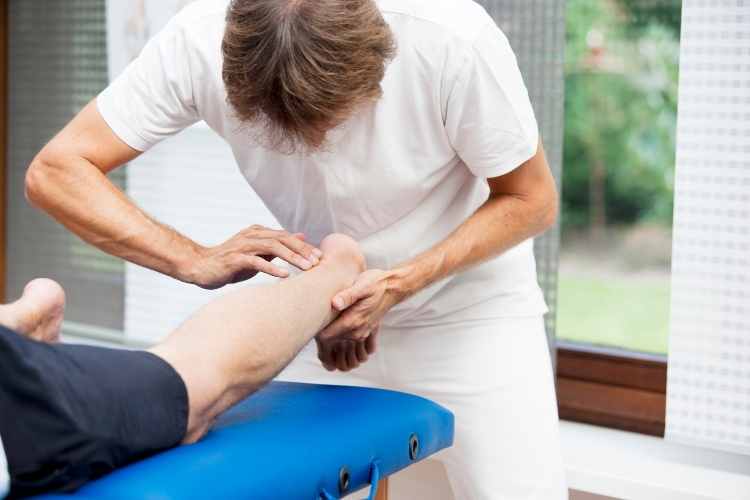Tendon injuries are painful and challenging because they sometimes take much longer to heal than something like a bone break. While breaking a bone is often traumatizing due to a high-impact injury, tendons tend to take months or even years to rehabilitate.
Tendons are strong cords that are flexible and provide stability in your body. They connect your muscles to your bones to facilitate normal movement, whether you’re standing up, swinging your arm, or running at a sprint.
The tricky thing with tendon injuries is that a sprain can feel minor, but tiny tears in a tendon that go without treatment can develop into full-blown tears that require surgery or replacement.
If you’re lucky enough to experience a tendon injury without a complete tear or something that needs surgery, then you need to know how to get your tendon back on track and heal faster so you can get back to optimal performance. We’ve put together some things you can use to heal your tendon in a shorter time and prevent reinjury.
Physical Therapy Is Your Friend
If you have insurance, you likely have some form of physical therapy. Even if you don’t, it’s worth a look. When you hurt a tendon, your body has a way of shifting stress to other muscles around your joint or other muscles. What that means is that even after your tendon heals, the muscles around it will be weaker. When you try to put stress on it or exercise at your pre-injury intensity, your muscles around the tendon may not be up to the task. This increases the risk of reinjury.
Physical therapy does a great job of slowly building back strength in your tendon and its surrounding muscles. So put in the time and listen to your therapist’s suggestions even if you feel like you’re ready to go. You’ll be glad you did.
Control Inflammation to Speed the Healing Process
If you want to heal an injured tendon faster, then you need to keep inflammation in check. Swelling can get in the way of your immune system and slow your healing process down. The best ways to control inflammation are usually icing the injury and rest. You should be icing the injury in the immediate aftermath at regular intervals for days. After that, icing your tendon after exercise or when it’s feeling sore is also a good idea. If that isn’t working well enough, you can try taking over-the-counter anti-inflammatories to control swelling to give your body the room it needs to heal.
Tape and Braces
Preventing minor injuries from turning into serious ones goes a long way toward healing tendons faster. Something like tendonitis is a minor nuisance, even though it can feel quite painful. But, again, you don’t want to compensate for the pain, change the way you move, and cause a significant tendon tear.
Athletes use tape and braces to control their range of motion and prevent their joints from going in directions that you don’t want them to. You can buy tape and braces online or at your local sporting goods store at an affordable price. Physical therapists can also recommend a suitable brace depending on your activity level and injury severity.
Peptides & the Healing Process
Peptides are short chains of amino acids that trigger a specific bodily response. There is a lot of ongoing research studying how they facilitate the healing process. BPC-157 is a peptide widely known for its healing properties. It was originally isolated from the human stomach and shows in tests that it’s very effective at reducing inflammation and protecting the body from damage. It can help heal muscles, tendons, ligaments, nerves, and other body parts after injury according to the latest research studies.
